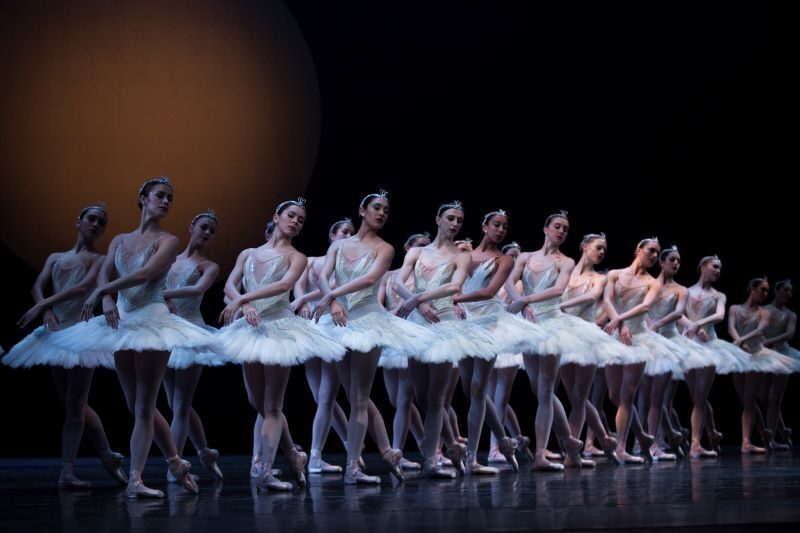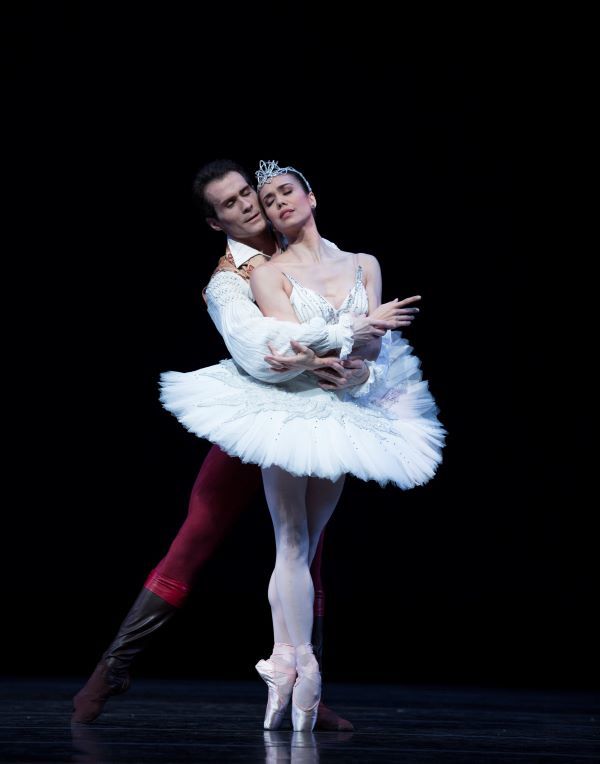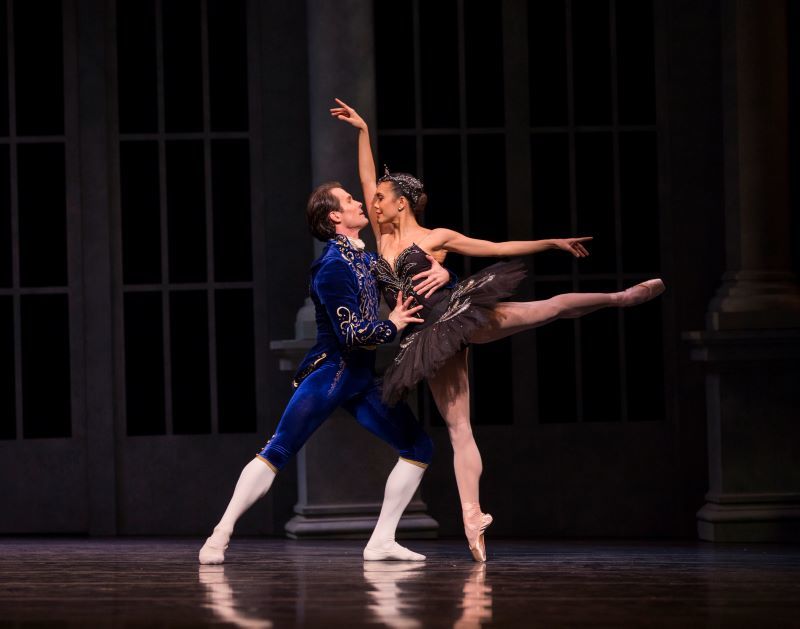Swan Lake: Flying Away from the Flock
Review of Kent Stowell's Swan Lake by Pacific Northwest Ballet
Written by TeenTix Newsroom Writer Jaiden Borowski and edited by Teen Editor Kendall Kieras

Welcoming the viewer with a red curtain and the strong classical notes of Tchaikovsky’s legendary score, Swan Lake (via YouTube) begins. Free on the virtual platform for a limited time, this piece, danced by the Pacific Northwest Ballet (PNB), granted home-bound viewers an escape to the arts. Obviously, the virtual platform had its own distinct advantages and disadvantages in comparison to the live performance. With easy accessibility and free viewing, the online version surpassed the live performance, but the sometimes fuzzy video and the small screen left it lacking in other respects. Though I doubt many people clicked on the video expecting an equal experience to live performance, it’s noteworthy to mention that the different mediums give distinct advantages to their audience.
Although confined to a small screen, the obvious precision of every movement was incredible. It seems standard to expect the ease of perfection from ballet, but the dancers’ fluid grace still astounded me. The movement was not cookie-cutter neat; instead, it was tailored to fit each character’s personality, a key aspect to the success of the ballet. Whether it was a lilting, drunken friend at the party or the great swan herself, the message of the dancer’s persona was very apparent. But no matter how beautiful the method of storytelling was, the dance had the potential to be quite confusing, especially to someone new to the story, such as myself. Thankfully, a previous YouTube video by PNB outlined the simple story of the ballet and gave details on the characters, primarily the two main characters, Siegfried and Odette. Siegfried is the prince who falls in love with Odette, the main swan.

A visually captivating portion of the plot is the transition in the relationship between Odette and Siegfried, which morphs from strangers to curious friends to lovers. Initially, Odette and Siegfried are alone, Odette at the mercy of Siegfried’s bow. Then, when Odette is shielded by her group of swans, Siegfried is at her mercy. Both unknown to the other, they are initially strangers. Hidden behind a wall of feathers, Odette slowly reveals herself to him. After cautiously dancing ever closer, they are connected and framed by two diagonal lines of swans. They are the point and the swans make up the rest of the arrow, singling Odette and Siegfried out together. Together, but not removed from the group, they are now friends. Once Siegfried and Odette begin dancing simultaneously, their moves seamlessly complement one another, contorting into one picturesque knot. After their passionate dance, Siegfried raises Odette up above the rest of the swans. Essentially, their relationship is held above the others, and they are distinctly together as lovers.
However, this relationship is not purely one of ever-growing love; it can also be seen through the lens of identity. In the group of swans, all of them moving in-sync, their distinctiveness is lost. Odette seems to be part of a larger whole, instead of an individual. Yet when Siegfried first sees her, he meets her alone. Perhaps this is why she subsequently reveals herself to him instead of keeping her identity secret. As they dance, the couple becomes farther and farther removed from the flock of swans. As Siegfried begins to know her, Odette seems to begin to know herself better as well, remembering who she was as an individual before Rothbart (the evil sorcerer) took away her identity and made her part of the flock. The culmination of their love, Siegfried raising Odette above the others, shows his recognition and her acceptance of her individuality.

This individualism and self-realization are part of what makes the following scenes so painful. As Siegfried falls deeper in love with Odile (Odette’s trickster look-alike) while under the impression that she is Odette, it becomes clear that the bond between the two was not focused on who Odette was, but rather on her external appearance. Odile danced almost sadistically, smiling as she toyed with Siegfried, moving just out of reach. This body movement heavily contrasted with Odette’s somber, soft method of dancing, yet Siegfried could not seem to tell the difference. Finally, Siegfried is captivated by Odile’s dance and unwittingly proposes to her instead of Odette. After having her identity mistaken based on looks alone, the betrayal against Odette felt palpable.
Historically, there are a variety of endings after this point, and it only makes sense to have multiple endings after a plot twist like that. In this performance, after the betrayal, Siegfried finds Odette at the lake and, after a heartfelt apology, Odette mercifully forgives Siegfried. The couple is seen distinctly from the flock, and, more importantly, Odette is seen as an individual once again. Even though Siegfried couldn’t fully see her as distinct and confused her for Odile, Odette realized her identity despite his mistake and forgave him for it. Her forgiveness shows that she didn’t need Siegfried’s validation to tell her who she was. This is the true message of the ballet: to be able to know who you are and accept your identity even if those around you cannot. Despite the limitations of a YouTube video, the meaning of the ballet, emphasized by the performers’ flawless moves, still came through powerfully.
Pacific Northwest Ballet aired Kent Stowell's Swan Lake on YouTube May 22-27, 2020. For more information see here.
Lead photo caption: Pacific Northwest Ballet company dancers in Kent Stowell’s Swan Lake. Photo © Angela Sterling.
The TeenTix Newsroom is a group of teen writers led by the Teen Editorial Staff. For each review, Newsroom writers work individually with a teen editor to polish their writing for publication. The Teen Editorial Staff is made up of 6 teens who curate the review portion of the TeenTix blog. More information about the Teen Editorial Staff can be found HERE.
The TeenTix Press Corps promotes critical thinking, communication, and information literacy through criticism and journalism practice for teens. For more information about the Press Corps program see HERE.


